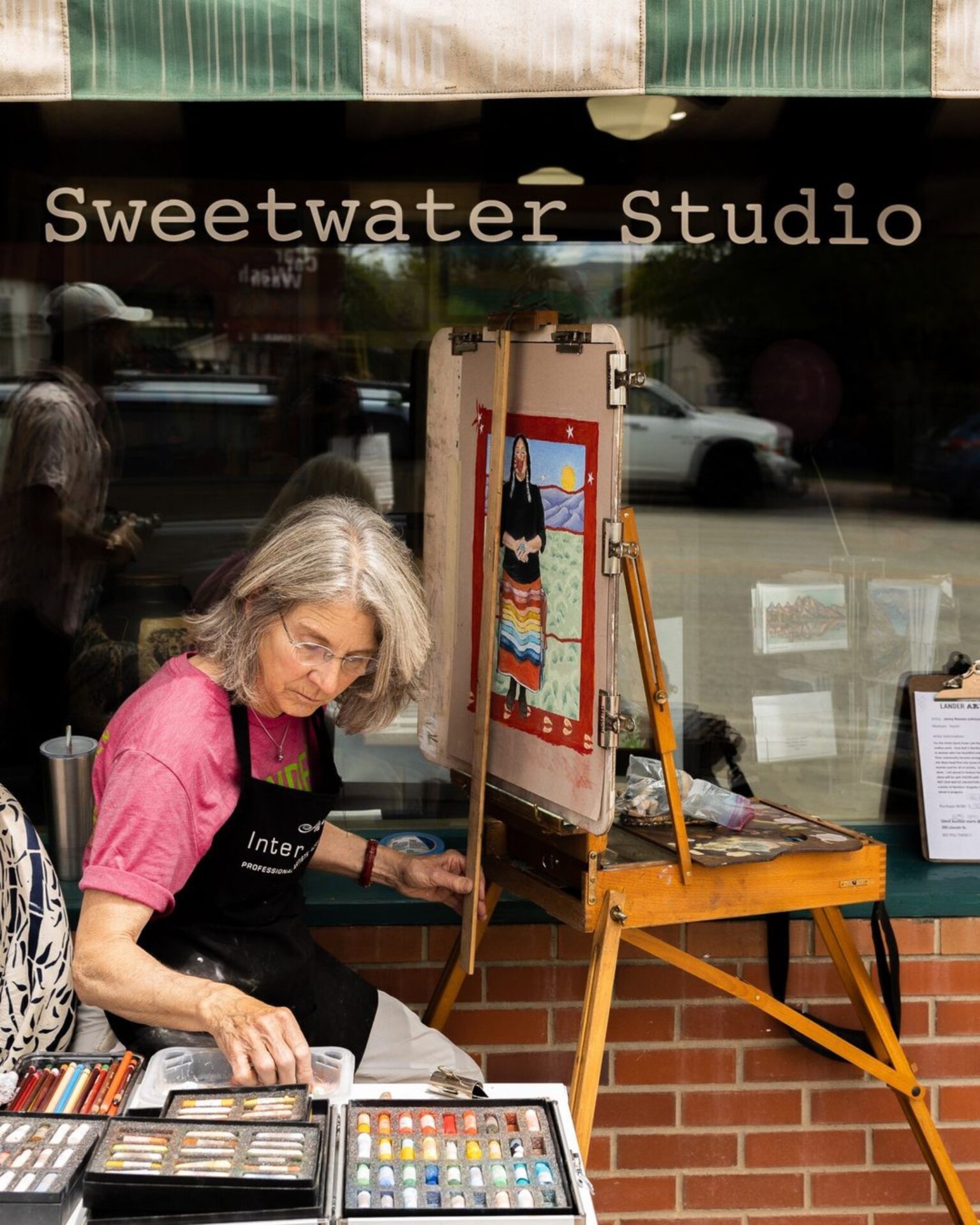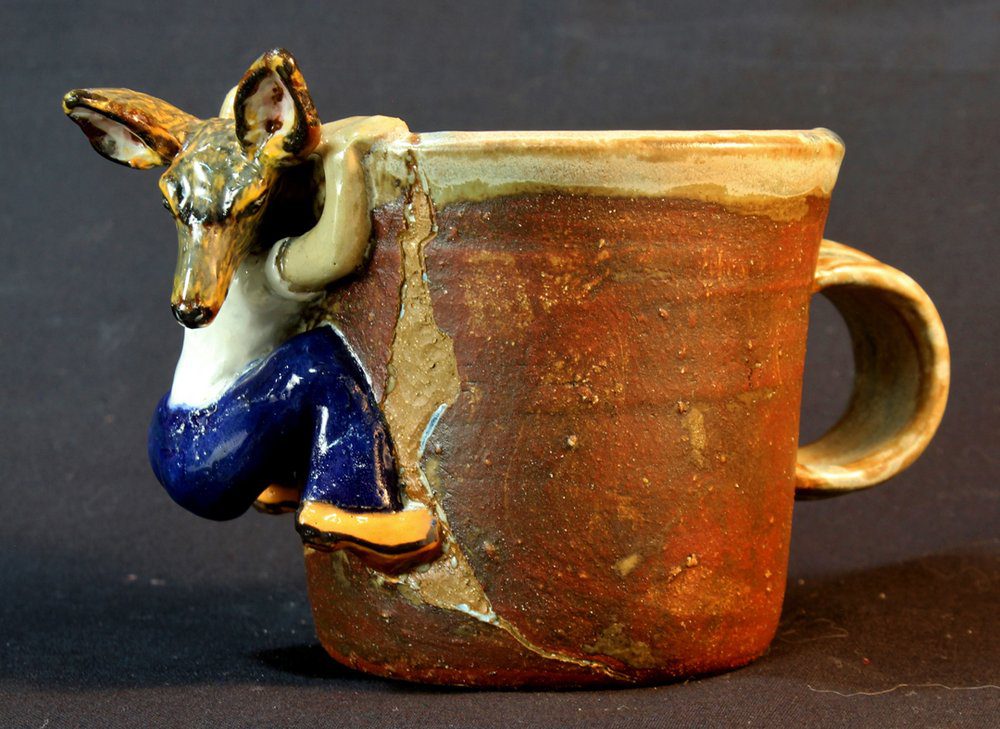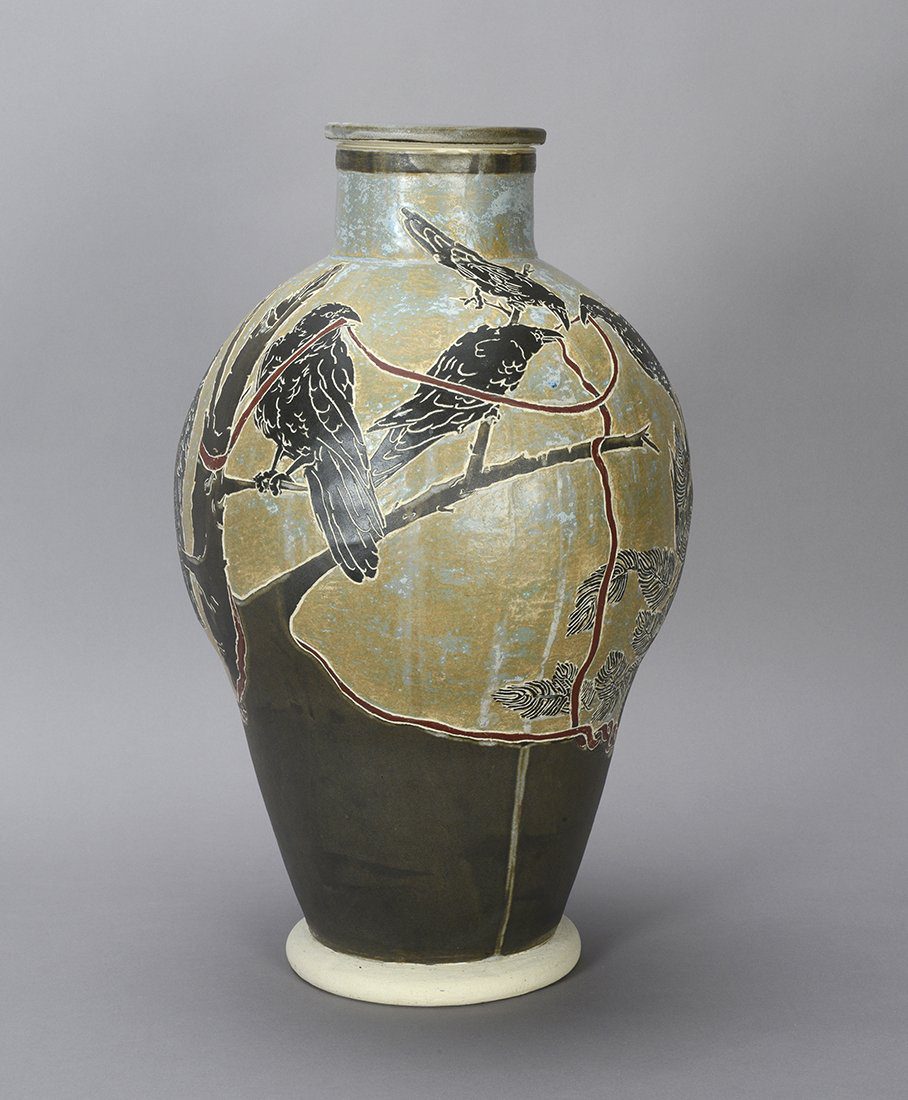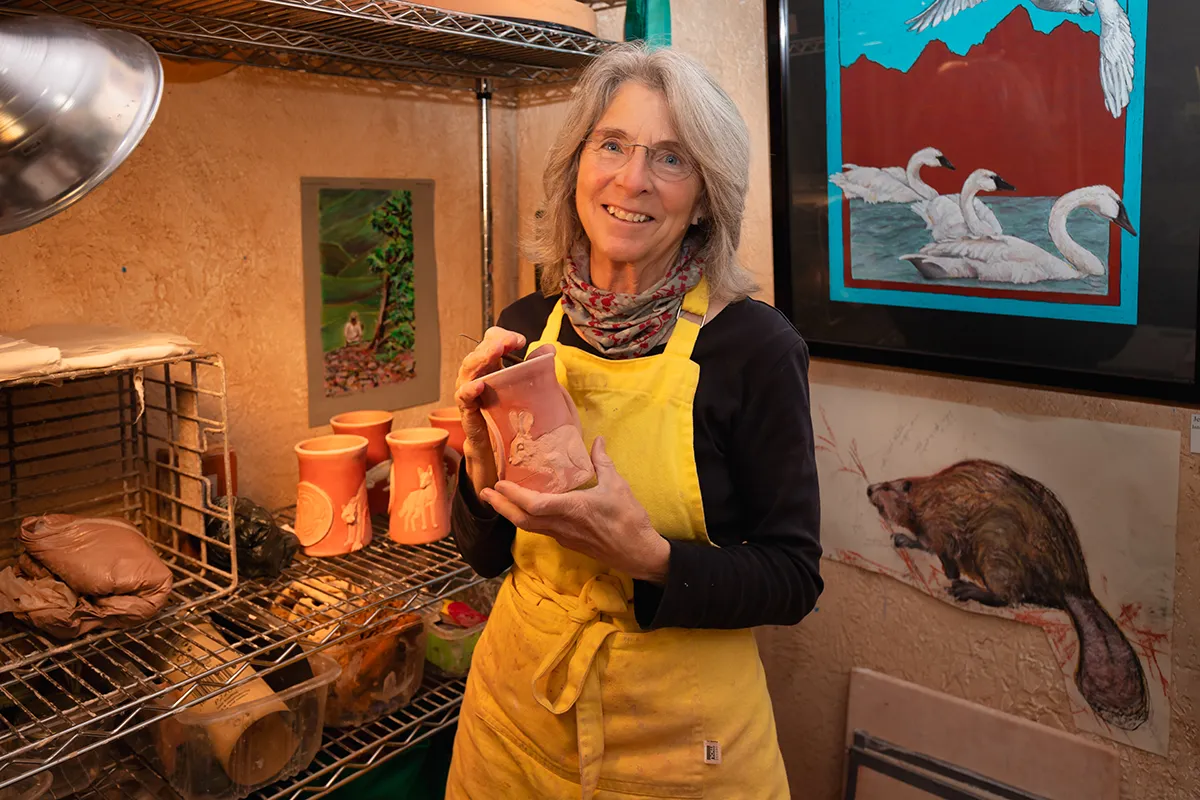Jenny Reeves-Johnson

Bio and Artist Statement
Jenny Reeves-Johnson studied Art at the University of Tulsa, Oklahoma, attaining Art Teaching Credentials then sprinted to the Rocky Mountains to create life’s adventures, 1974. Four years into the best teaching job ever, at Arapahoe School, a young ambitious art-heart took Jenny off the payroll grid and into the studio. Jenny evolved into managing ranches with her husband and daughter, Jessi, throughout the west; she kept her studio art inspired and growing for the whole ride. Since 1977, Jenny has created and maintained efficacious Art Studios offering space to multiple artists and hosting art conversations, “happenings”, and sales. She returned to the classroom sporadically, teaching kindergarten through college level. In the early 2000s’ Jenny Reeves-Johnson orchestrated three very large public hand-built clay tile installations; Missoula MT., McCloud, CA. and a community mural in Mt. Shasta CA. The Mt. Shasta mural has drawn much attention and is featured in an extensive oral history project of the Bancroft Library, University of California, Berkeley. The in-depth web site for this project: bancroft.berkeley.edu/ROHO/projects/cba/index.html
Jenny’s art reflects the western life she has embraced. The resulting connection often reveals conservation and social issue interests in her subject matter. Much of Jenny’s art gives a percentage of her sales directly to her composition’s theme. She has given back to The Wyoming Game and Fish with “Beaver Art” donation going directly to regional beaver mitigation. More donations have gone to: Snake River Fund, Not Our Native Daughters, Wildlife Crossings, and The Red Desert Audubon Society. The Wetlands Society (Jackson) and Wyoming State Parks commissioned Jenny for their poster art work. Many other NGO organizations have also used Jenny’s art work to help in their fund raising. This kind of involvement helps make Jenny’s art have a bigger, and, “hands on” difference in giving back.
The Beaver Coasters. This cause is big. It is about the WHOLE story of the west, and really, of the earth. The beaver’s plight represents one of the poorer decisions that humans made regarding a sustainable earth. There is not an easy straight ahead answer. What I am hoping to create is dialog. Change in human’s attitude and change on the landscape are both slow processes if they are to last. Let us at least begin to have beavers enter into the conversation. I’d love to visit more about this, look me up!



